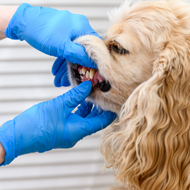Study reveals seasonal patterns of equine tapeworms
Scientists recommend horses are saliva tested in the spring.
A new study has revealed how the seasonal activity of mites impacts UK horses’ risk of developing tapeworm.
The study, conducted across 14 months in three yards in the UK, tracked the seasonal patterns of Anoplocephala perfoliata.
A. perfoliata is the most common tapeworm in horses, and lives at the junction of the small and large intestines, It is frequently associated with colic, which can be life-threatening to horses.
In order for the parasite to complete its lifecycle, it needs oribatid mites. These microscopic creatures live in the soil, acting as an intermediary host for the tapeworms.
Therefore, to assess the seasonal risk of tapeworm to UK horses, researchers assessed the presence of oribatid mites in the stables. They also identified which mites were infected with the tapeworm through their DNA.
Although the mites were found to be present all year, and horses were also infected year round, researchers discovered that they mites significantly less active in the winter than in the summer.
Analysis revealed that tapeworms were most common in mites which were collected between March and September. This could highlight this period as that with the highest risk of infection.
The data also identified that new mite families were involved with parasite transmission, which could further understanding of the potential that horses could become infected in contaminated paddocks.
Based on these findings, researchers suggest that spring could be the best time to saliva test horses for treatment decisions to prevent infected individuals. They also highlight the importance of paddock hygiene procedures, particularly dung removal, in breaking the lifecycle of the parasite.
Horses grazing for only half a day were also less likely to test positive for tapeworms.
The findings of this study are expected to lead to tailored, evidence-based deworming, reducing the use of antiparasitic drugs in order to protect their efficacy. Additionally, the study highlights the potential of grazing management to play a part in reducing infection risk.
Jacqui Matthews, director of veterinary science at Austin Davis Biologics, said: “This is the first study to simultaneously track oribatid mites and horses for tapeworm infection over time, providing crucial evidence to improve tapeworm control strategies and, importantly, highlighting the value of parasite testing in reducing unnecessary blanket treatments that drive wormer resistance.”
The full study can be found in the journal ScienceDirect.
Image © Evgenii Panov/Shutterstock.com



 The WSAVA has invited veterinary professionals to a webinar on responsible antibiotic usage in dentistry.
The WSAVA has invited veterinary professionals to a webinar on responsible antibiotic usage in dentistry.